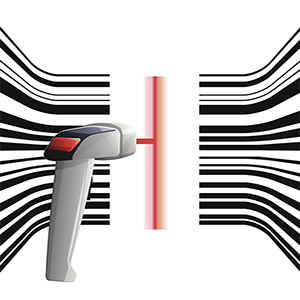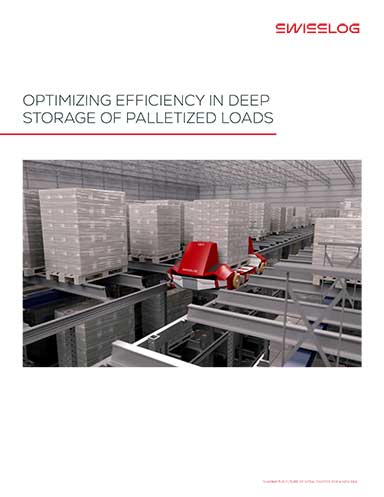Eliminate Batch Processing to Speed DC Throughput

Most distribution centers in the United States adopted wave picking because batch processing efficiently handles large numbers of common stock-keeping units shipped in big orders...that's the traditional retail fulfillment model, but it's not the best approach in today's rapidly changing marketplace.
Processing orders with systems designed for static waves can be difficult when conditions start changing. Key business trends and evolving consumer demands make processing in waves a lot tougher:
The growth of e-commerce and multi-channel fulfillment requirements drive the need to process a greater number of smaller orders, often for just one item.
To keep DCs efficient at large batch picking and material flow, inflexible automation has been added to support greater output.
- To meet business objectives, companies design DCs below peak demand and rely on automation and temporary workers to scale throughput during holiday seasons and special promotions.
These trends have spurred a perfect storm for distribution managers. Today they struggle to orchestrate a DC’s automated systems. Fluctuating requirements are fueling the growth of waveless systems powered by innovative warehouse execution software (WES) to better handle the continually changing needs of multi-channel fulfillment.
What’s the Difference Between Wave and Waveless?
Traditionally, warehouses relied on a series of processing waves for picking and sorting. Tier 1 warehouse management software (WMS) organizes orders based on common characteristics, such as delivery date, product size, location within the warehouse or other conditions, including travel time for pickers.
An alternative adopted in Europe and by a few U.S. companies is waveless picking. It’s dynamic because each order is released for picking, one at a time, based on a series of rules. Importantly, there is no need to stop or interrupt picking between waves. Each order is sent to the packer as it is picked – reducing the time needed to get the order on its way to the customer.
In wave picking, a large group of orders drops for processing as one batch. Items needed for these orders are then picked together and, along with other items from various zones, are brought to a central location such as a unit sorter or a pack area, to be sorted for individual customers.
Problems arise in a traditional DC, however, when picks are not properly coordinated. Equipment is often tied up while waiting for all items to be gathered for packing. The wave cannot end until every order is complete, at which time the equipment and systems are finally available for the next wave. As a result, pickers may be left idle while awaiting the next wave. Pick faces, sortation machines and pack stations are underused as well.
Signs That It’s Time to Consider Waveless Processing
With wave processing, picker travel time is reduced, leading to better efficiency than picking orders one at a time. There are problems with rigidly automated waves, however, and they typically show up in a DC in one of three scenarios:
Without manual expediting, there usually is no ability to accommodate high-priority picks and tasks once a wave is established.
During the start and the middle of a wave, pickers, packers and automated material handling equipment (MHE) usually stay busy; but during the end of a wave, one process often finishes before others, which leads to idle time as well as starts and stops throughout the workflow.
- The batch nature of waves inherently limits the picks, tasks and processes that potentially could be worked on.
If your DC experiences any of these issues, your warehouse management system (WMS) for order processing and warehouse control system (WCS) to orchestrate material flow likely are purpose-built to optimize repeatable processes. They work well to automate systems that handle large SKU volume and velocity but, by their nature, are complex and require significant time and expense to modify. They typically do not communicate information in real time or function as one system to monitor and control workflow in a DC.
Faced with these limitations, it may be time to consider how more flexible and configurable systems with functions discretely coordinated by warehouse execution software (WES) can enable your DC to operate in a waveless manner.
MHE Needed for E-commerce Fulfillment
 The key to designing a distribution center to efficiently handle e-commerce fulfillment alongside traditional channels is to incorporate flexible equipment that can respond to wave-based and waveless picking. MHE and software need to be reconfigurable on the fly to accommodate ever-changing sizes, shapes, weights and numbers of SKUs.
The key to designing a distribution center to efficiently handle e-commerce fulfillment alongside traditional channels is to incorporate flexible equipment that can respond to wave-based and waveless picking. MHE and software need to be reconfigurable on the fly to accommodate ever-changing sizes, shapes, weights and numbers of SKUs.
MHE in an e-commerce DC may include these types of machines:
A-frames are well suited for high-velocity picking of small, uniform SKUs.
Pharmaceuticals, for example, are efficiently handled with A-frame equipment that automates picking.
Put-to-light stations identify what products go in each carton.
Workers can pack multiple products quickly and sort them correctly in a shipping container while being guided by indicator lights.
Goods-to-person systems bring totes or cartons directly to the picker from dense storage media. This provides access to a large number of SKUs within easy reach of workers at their pick stations. This design also saves workers from spending time walking to retrieve items located elsewhere.
Other MHE can include horizontal and vertical carousels, vertical lift modules, person-to-goods modules, and pick carts with software and lights.
WES to the Rescue: Fine-Tune Your Warehouse
Handling orders on a continuous or waveless basis requires new levels of flexibility from hardware and software. WES is needed to better coordinate order processing of the WMS with the insight into the status of equipment and material flow the WCS provides. What’s different is how WES delivers real-time connectivity to all of a DC’s systems (order management, labor, transportation and automation controls), without changing or interfering with the existing systems.
WES is adaptive and thus well suited for waveless processing. It’s able to alter workload release priorities and schedule orders in a sequence that avoids bottlenecks and overloading of work areas. WES makes use of feedback mechanisms to continuously replan work.
To achieve waveless processing, WES can be implemented with configurable rules to govern how the flow of work should be processed. The new flexibility is game-changing:
Because work is not batched, any order, item or task entering the system is available for picking or other processing.
Waveless processing improves throughput by accommodating high-priority orders on the fly.
The drop in productivity at the end of waves is eliminated.
- The density of potential picks increases, which helps cut worker travel time.
In short, the addition of warehouse execution software enables workers and MHE to handle more tasks in less time.
Positively Impact Warehouse Performance – and Your Bottom Line
An example of how much waveless processing can improve performance is found at one of the nation’s largest suppliers of prescription and over-the-counter medications and related products.
The company’s DC had reached capacity with legacy systems, and engineered labor standards proved difficult to meet. The existing manual pick/passing picking systems were constrained due to unbalanced workloads across the operation, which flooded some pick zones while others had no orders. The number and location of bottlenecks changed with the flow of orders that required a number of different types of picking.
FORTE designed and implemented a new DC with hardware and software that balances the flow of orders through 11 pick areas. The FORTE Smart Warehouse Suite™ WES enables the pharmaceutical company to configure specific picking characteristics and sequencing requirements of each order and pick area. As a result of the switch to waveless processing, the company saw several benefits:
Picking productivity increased as much as 30 percent by reducing how much pickers need to walk.
Throughput capacity escalated up to 20 percent through better balancing of work throughout the MHE system.
All labor associated with order preparation and order start was eliminated, leading to an increase in induction capacity of as much as 200 percent.
- Outbound quality check/pack productivity improved by 30 percent.
Additionally, designing a new facility based on waveless processing substantially reduces the initial investment compared to wave-based designs. Extra costs to create buffers in systems can be reduced or eliminated. The same throughput can be achieved with smaller DCs.
Solve Multi-Channel Challenges with an Expert Partner
Changes in demand, including shorter lead-times, expanding SKU counts and order variability overwhelm traditional fulfillment practices. DC capacity is constrained by material handling equipment and software configured for large batches of similar products in predictable waves.
Solutions can be found in state-of-the-art DC design that implements waveless strategies. They enable companies to better manage multi-channel fulfillment, especially to meet growing e-commerce orders.
Successful multi-channel fulfillment is challenging but can be achieved by partnering with a DC design provider such as FORTE, which has deep warehouse engineering and operations expertise – including tightly integrating MHE and existing warehouse management and control software to achieve waveless processing.
Related: NIKE Unveils Its Most Advanced, Most Sustainable Distribution Center

Article Topics
Swisslog News & Resources
Walmart chooses Swisslog AS/RS and software for third milk processing facility Walmart and Swisslog Expand Partnership with New Texas Facility Swisslog gives live demonstration of ItemPiQ latest evolution Cardinal Health at-Home Solutions automates from shelf to patient Inside Cardinal Health at-Home: Getting the right products out the door at the right time Retail distribution closes in on the customer Automated storage on the move into 2024 More SwisslogLatest in Warehouse|DC
Microsoft Unveils New AI Innovations For Warehouses Spotlight Startup: Cart.com is Reimagining Logistics Walmart and Swisslog Expand Partnership with New Texas Facility Taking Stock of Today’s Robotics Market and What the Future Holds U.S. Manufacturing Gains Momentum After Another Strong Month Biden Gives Samsung $6.4 Billion For Texas Semiconductor Plants Walmart Unleashes Autonomous Lift Trucks at Four High-Tech DCs More Warehouse|DC













